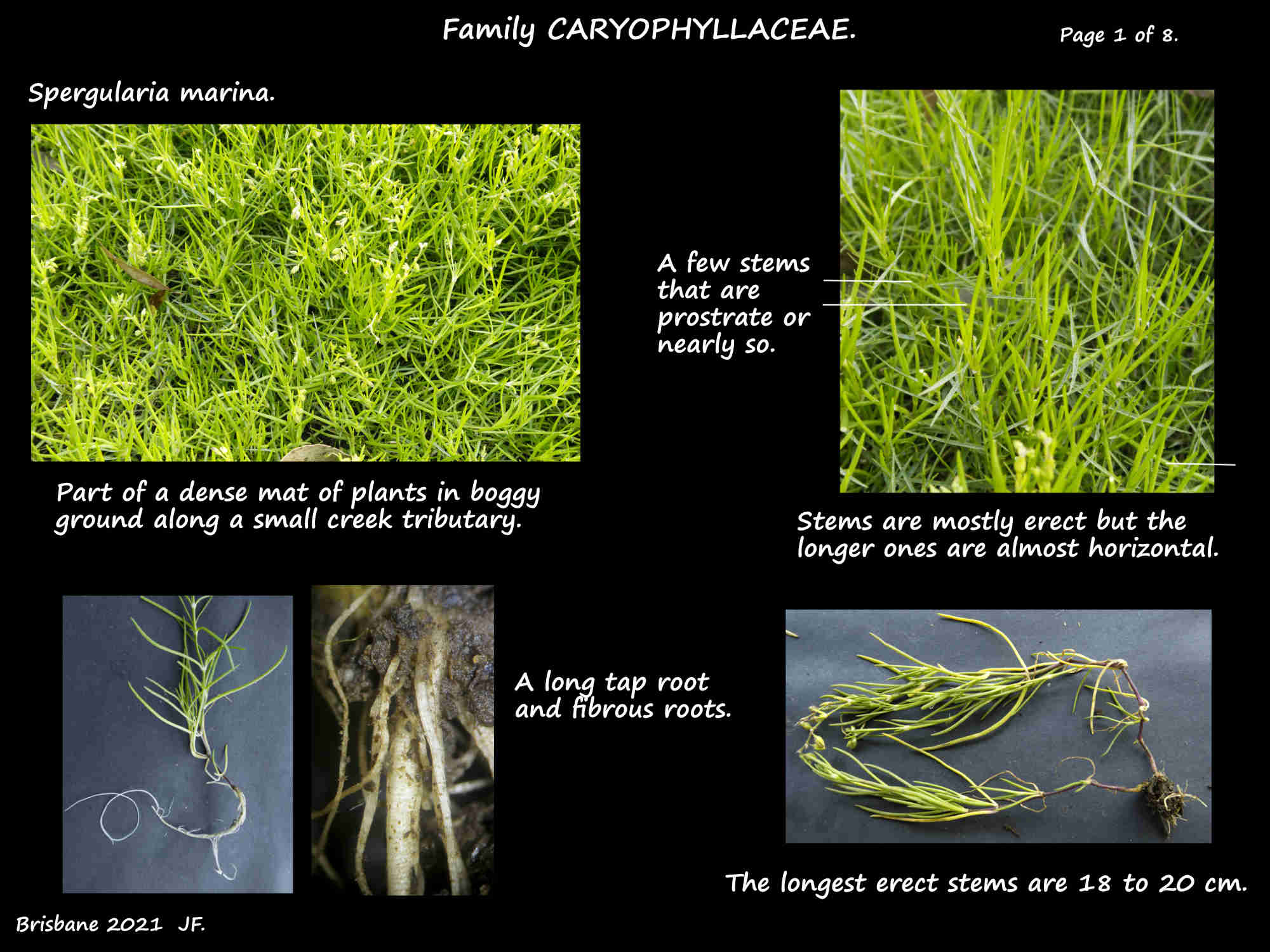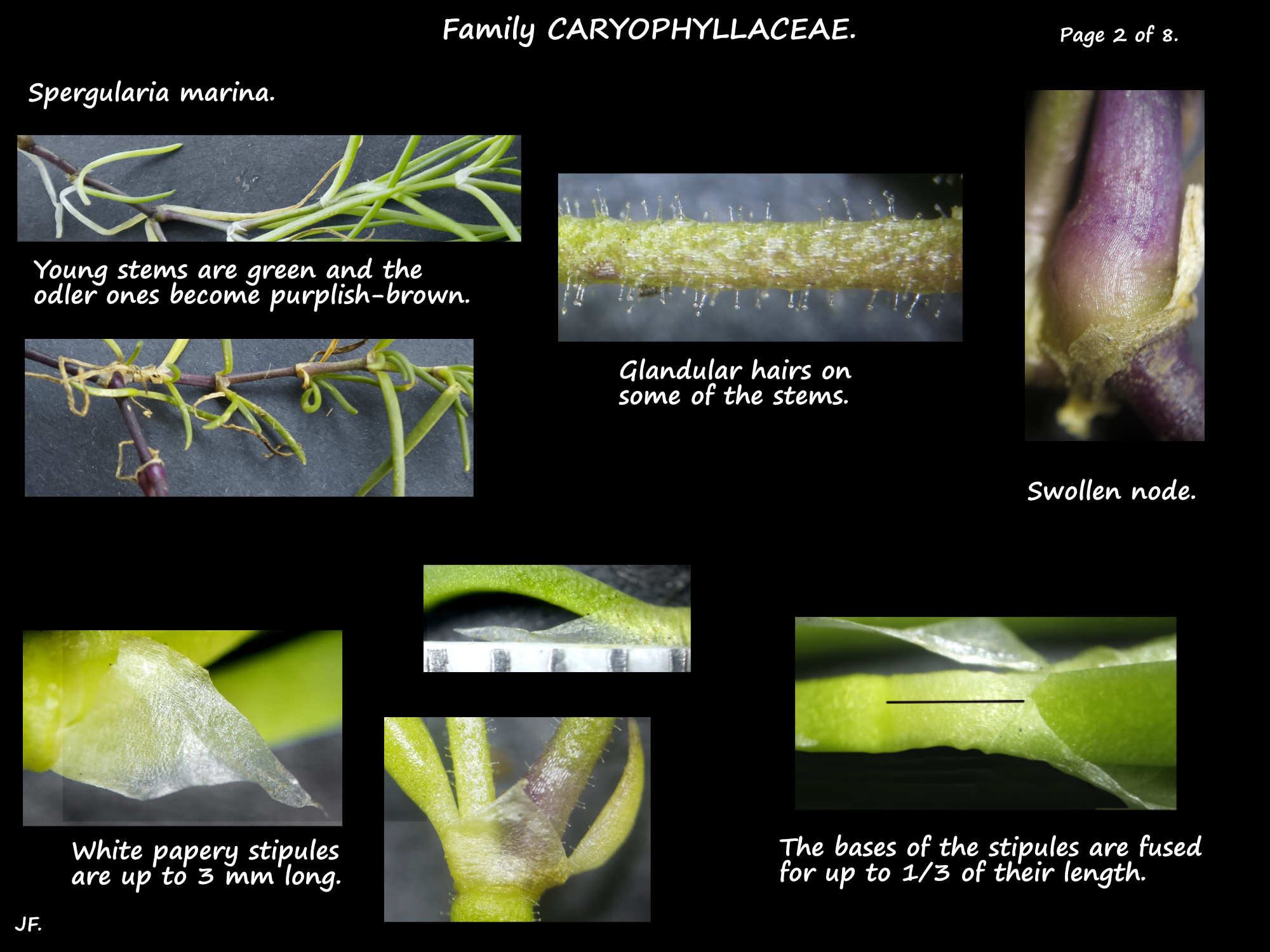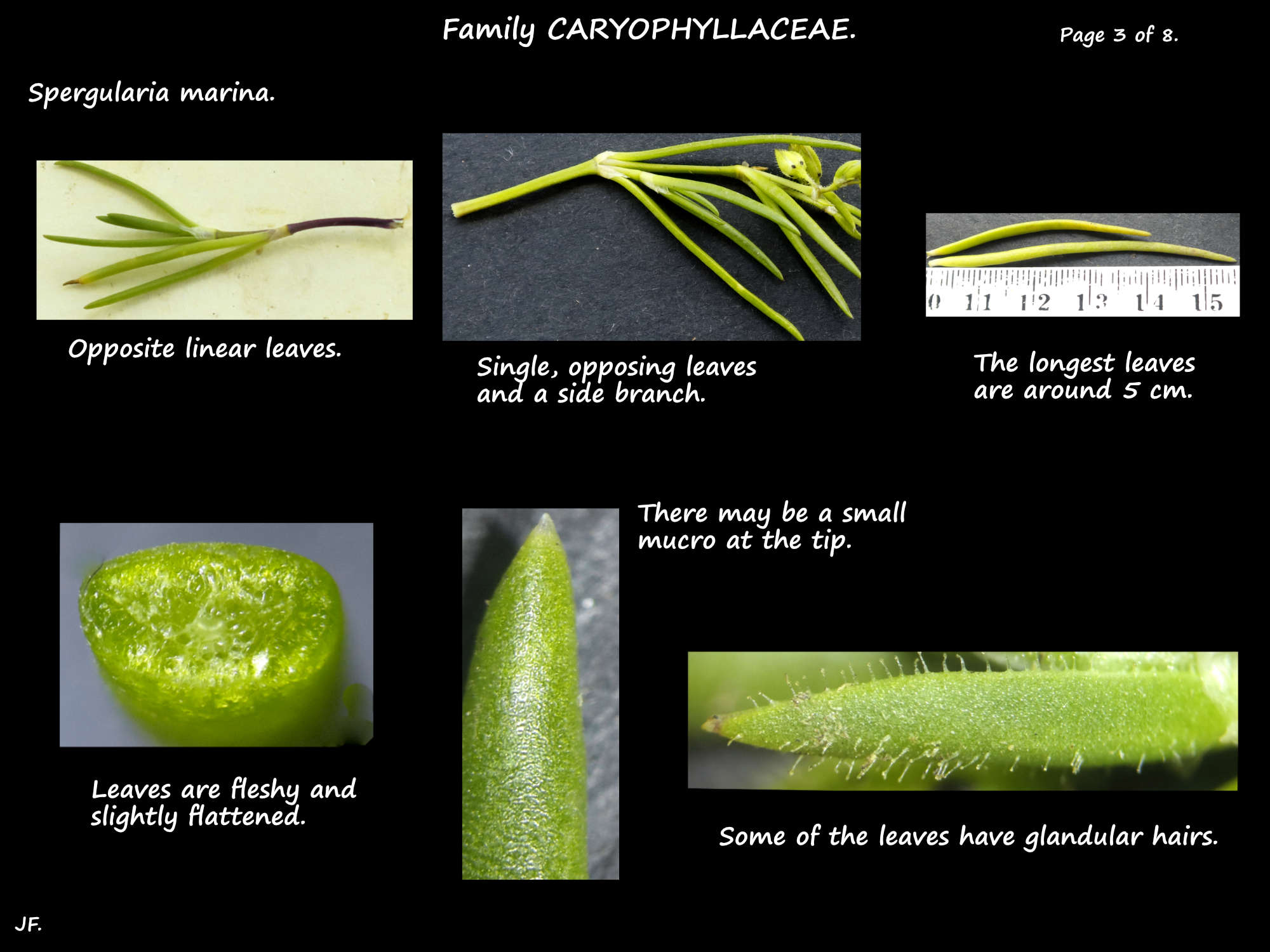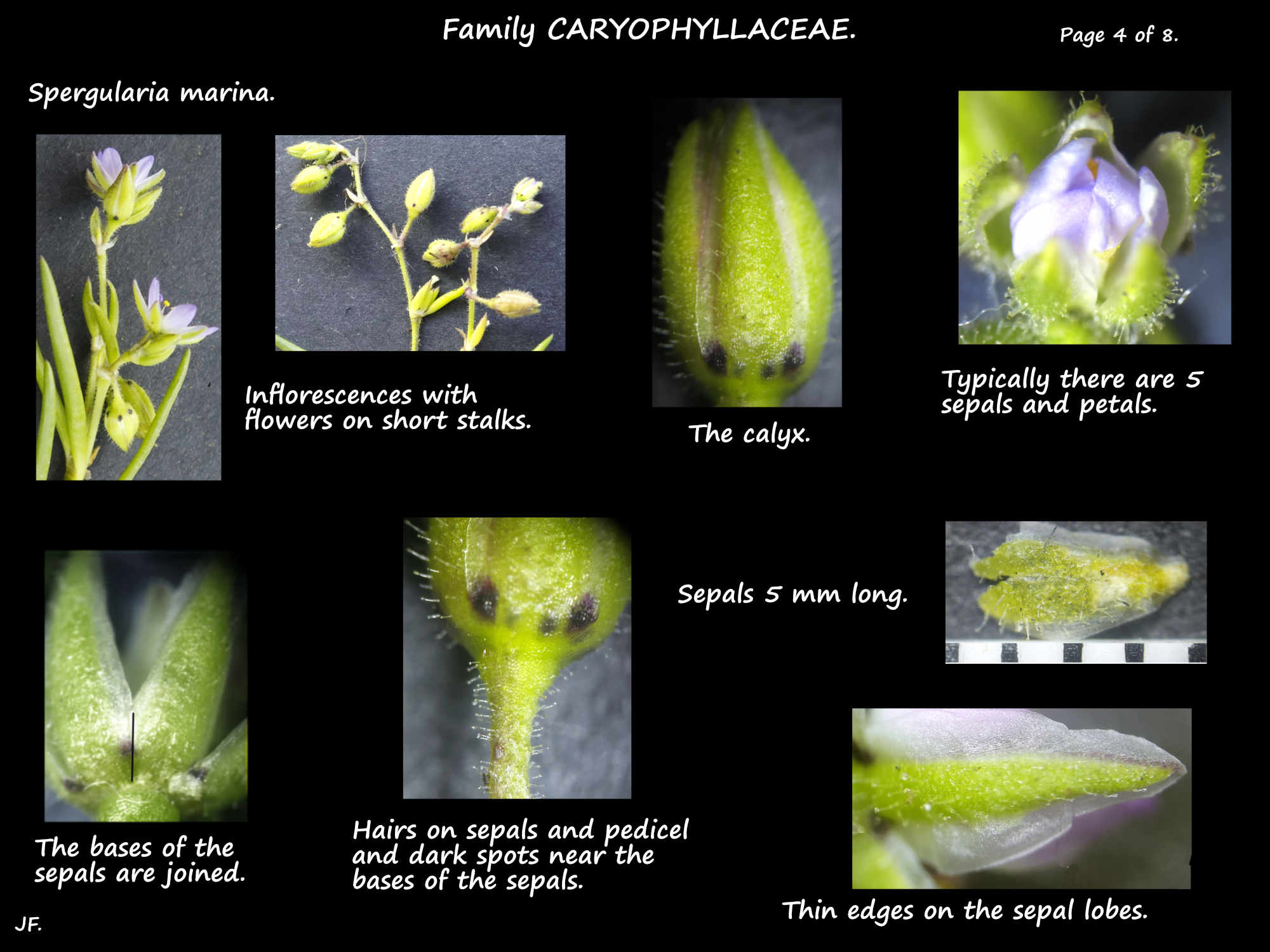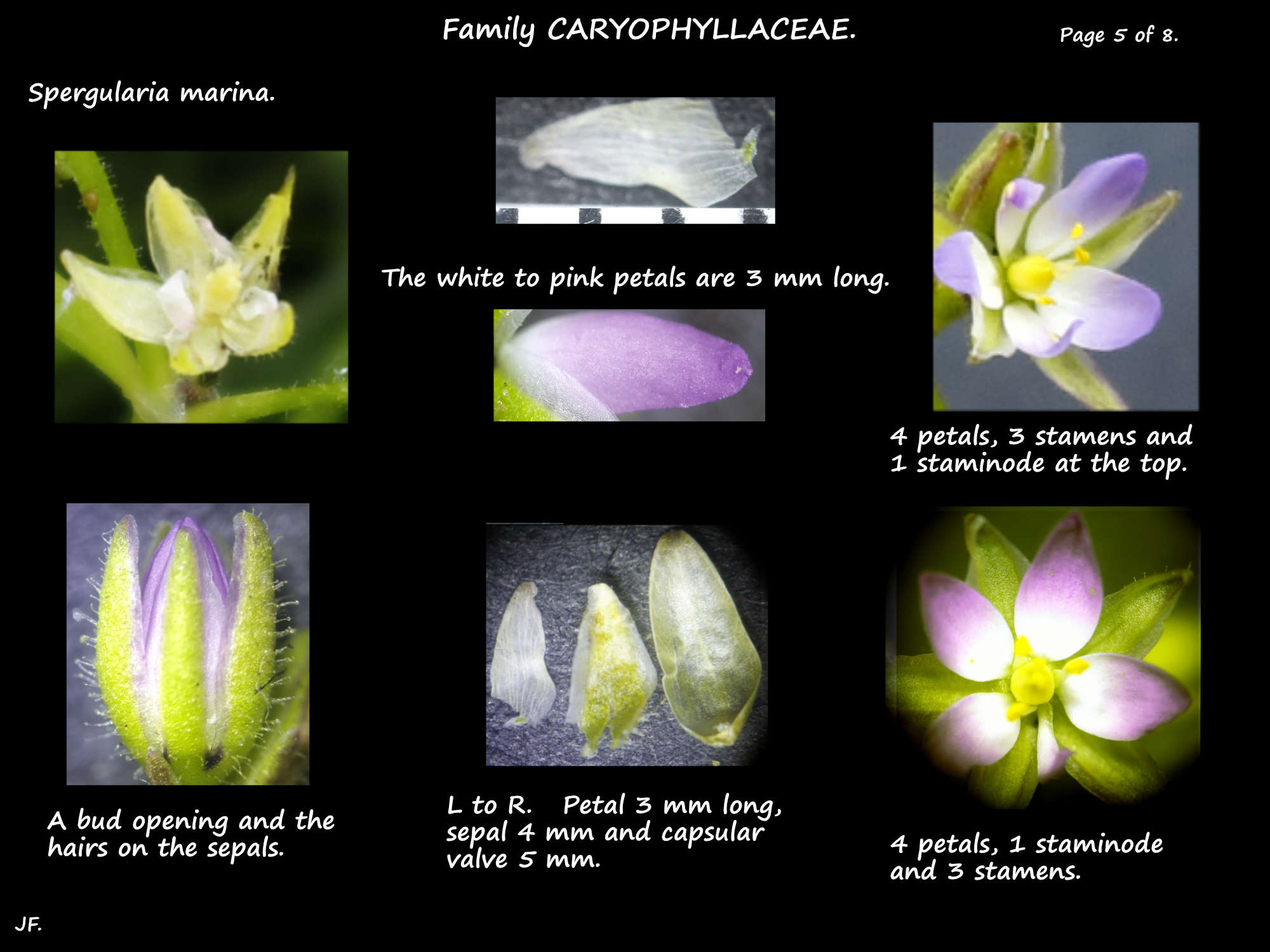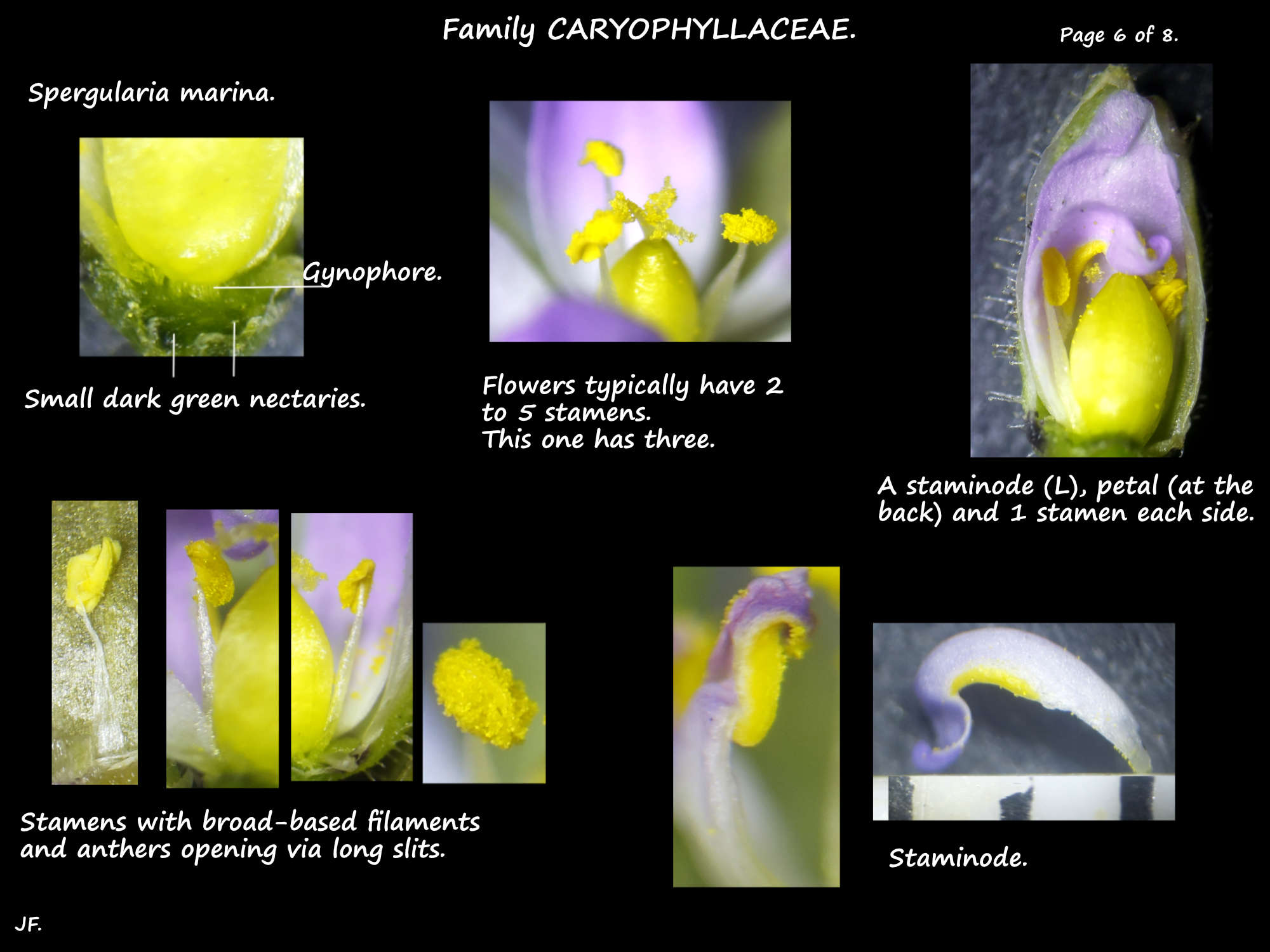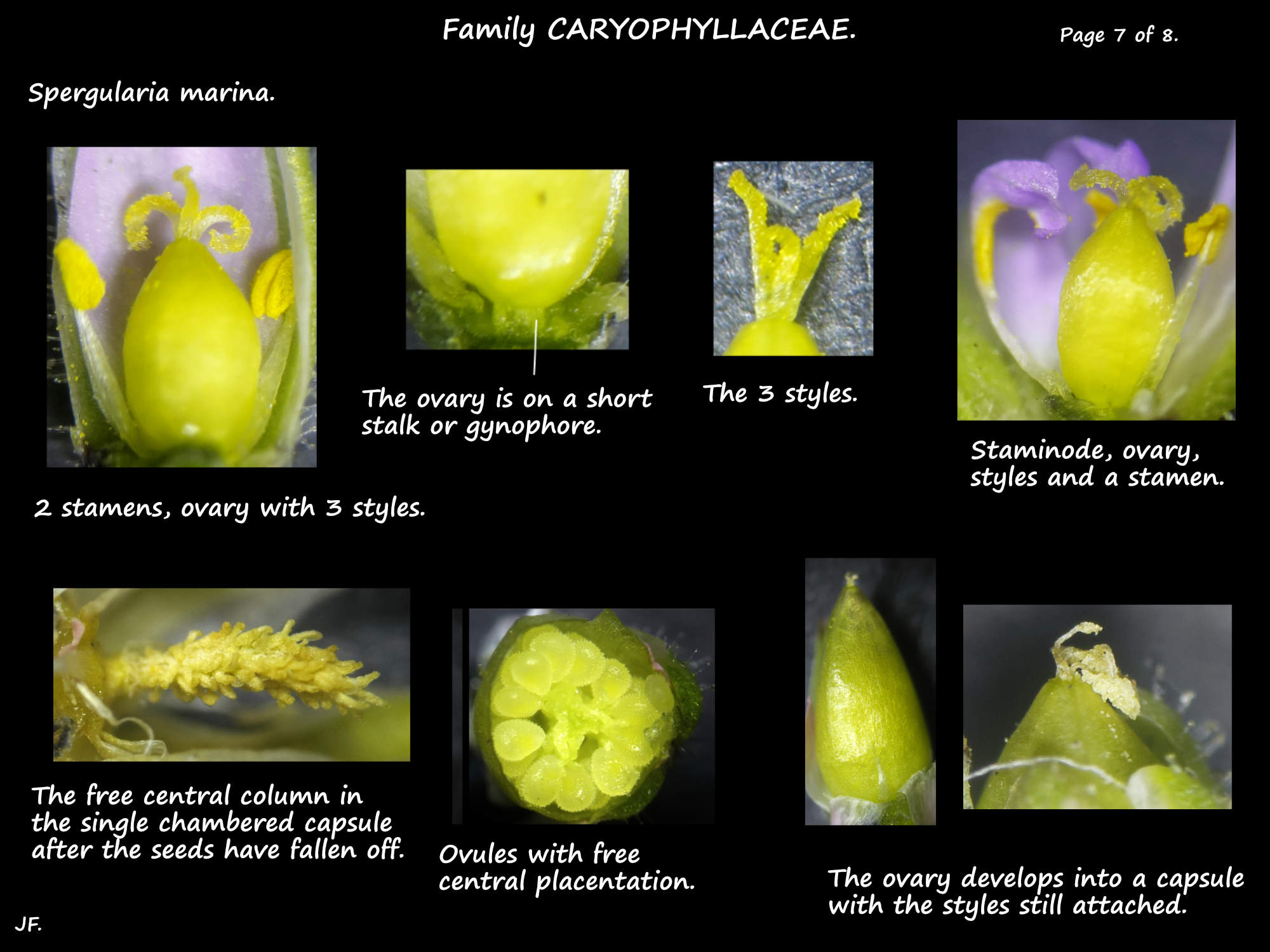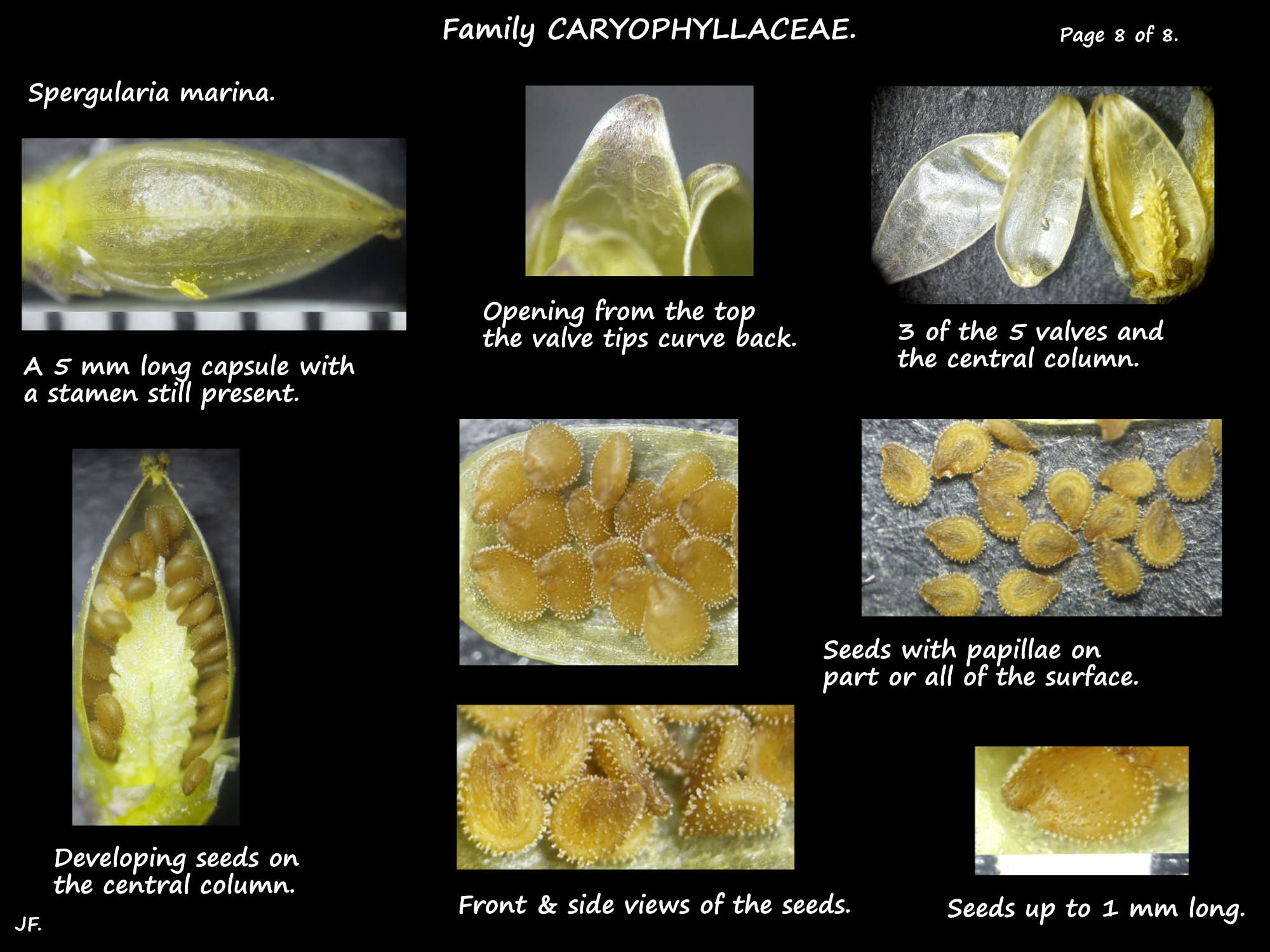Spergularia marina.
The Lesser Sea-spurrey, Salt or Sand-spurrey is native to Australia and is found in Queensland.
They are annual herbs with a taproot and fibrous roots.
The sprawling and erect plants have thin stems up to 35 cm long and swollen nodes.
The stems may have glandular hairs.
The leaves are opposite with mostly one on each side of a node but fascicles (tight clusters)
with up to 4 leaves may be seen.
Leaves are up to around 5 cm long and less than 2 mm wide.
The fleshy, linear leaves are slightly flattened in and have a blunt tip or an abrupt short point (a mucro).
They can be smooth or have glandular hairs.
The triangular stipules are up to 4 mm long with their bases fused around the stem.
They are white and papery with a tip that may or many not be pointed.
The branched inflorescences have glandular hairs on the stems and sepals.
The flowers are up to 9 mm across.
The green sepals are up to 4 or occasionally 5 mm long with the bases fused.
There are dark purplish dots near the base and the glandular hairs can be few or dense.
There are 0 to 5 petals, up to 3 mm long that are pink to mauve with a white base.
There are commonly 2 to 5 stamens but there may be up to 10.
There can be up to 3 staminodes.
The superior ovary has a single locule with free central fixation of the ovules.
The styles, under 1 cm long, have stigmas with papillae.
The dry, pale brown, ovoid capsules are up to 6 mm long and open from the top down with the tip
of each segment curving backwards.
There are numerous seeds mostly around 0.7 mm long and under 1 cm.
They are pale brown with a smooth surface or have sparse to dense, paler papillae.
Most have no wing but a capsule may contain seeds with and without a wing.
J.F.
